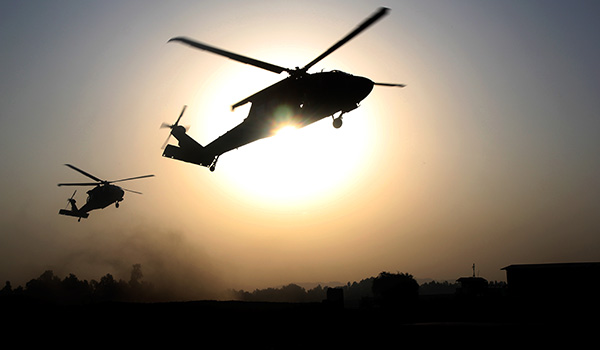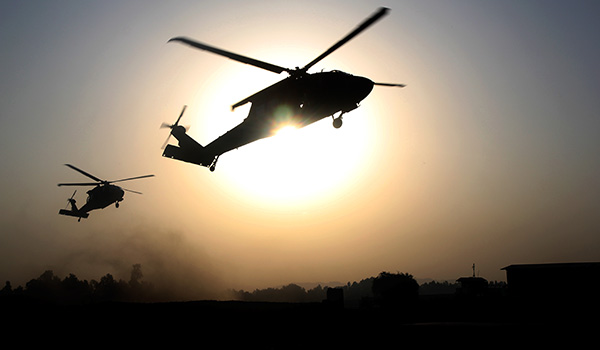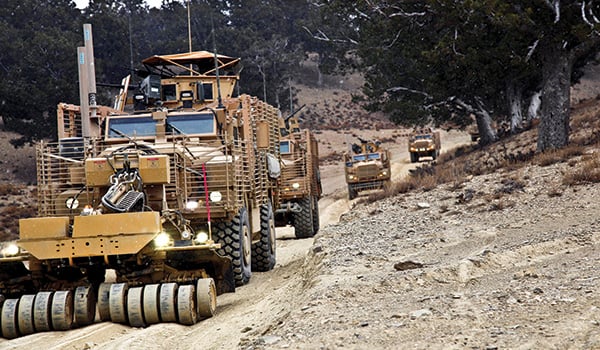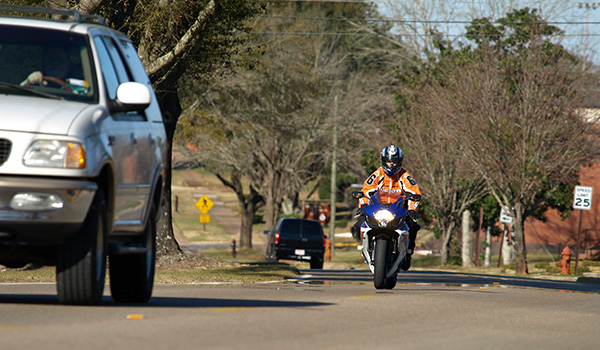
By BG Jeffrey Farnsworth and COL Matthew Lewis: There’s a lot of good news for the Army with respect to preventing loss through proactive risk management. Accidental fatalities continued their decade-long decline and reached record lows during fiscal 2015. Most notable for last fiscal year – the safest on record to date – we saw substantial decreases in fatalities due to weapons and explosives mishaps (down 67 percent), motorcycle accidents (down 24 percent), and crashes in private motor vehicles (down 38 percent). We attribute this steady decline to steadfast efforts by Army leaders at all levels. Senior commanders are holding junior officers and safety professionals accountable for their comprehensive safety programs and execution of prudent risk management under the mission command framework. Soldiers themselves are modifying their behavior and becoming more safety and risk conscious than ever before. We’ve been promoting awareness and risk reduction measures for individuals and organizations in both their on- and off-duty activities, and it’s encouraging to see their effects on preventing unnecessary loss.

U.S. Army Soldiers assigned to the 101st Combat Aviation Brigade, 101st Airborne Division, hover over a landing zone in UH-60 Black Hawk helicopters during air assault training at Jalalabad Airfield in eastern Afghanistan, Sept. 16, 2015. / U.S. ARMY PHOTO BY CPT CHARLES EMMONS
However, the environment is changing, and we must step back to observe the hazards and controls required to continue maintaining this downward trend. The Army Operating Concept of unknowns and unknowables carries with it new hazards and risks. Despite much of the force transitioning back to home station, training for decisive action maneuver is new to many Soldiers who’ve been focused on counterinsurgency operations for the past decade. This includes maneuvering mass-mounted formations, coordinating fire and maneuver, and operating at low-level flight altitudes required to obtain a position of advantage against a sophisticated, hybrid threat. In addition, the regionally aligned force concept presents unique challenges of a more dispersed force in unfamiliar terrain with young leaders serving on the frontiers with multinational partners who may have differences in risk management and decision-making. Army forces continue to be in high demand, and we must not let down our guard.
It is largely these reasons, as well as the realignment of resources, that have caused Army leaders concern during the first few months of fiscal 2016. Total fatalities were up 56 percent as of Feb. 15, an increase of 15 fatalities compared to the same period in 2015, with the preponderance of those due to a rash of motorcycle accidents (up 300 percent) and rise in aviation mishaps (also up 300 percent) during the first quarter. At this point, it’s difficult to assert whether this is a statistical anomaly that will dampen out in the months ahead or if it’s a harbinger of things to come. Whatever the case, we clearly must take swift action to protect Soldiers and Army equipment from unnecessary loss not only this spring and summer, but well into the future.
Leadership Focus
While this is an aviation-centric publication, we feel it necessary to first address the force’s enduring challenges with private motor vehicles (PMV). Our aviators and crewmembers, like all Soldiers, drive vehicles and, in some cases, operate motorcycles. Hazards on the road do not discriminate against age, experience or profession, and aviation culture does not necessarily translate into a safer driver or rider. This is especially true of motorcycle accidents, which disproportionately account for more fatalities than any other category and is the environment where we lose most of our leaders from grades E5 and up.

A convoy of U.S. Army mine-resistant, ambush-protected vehicles prepares to move out in the Mangrah Troy district of Afghanistan’s Paktika province, Jan. 4, 2012./ U.S. ARMY PHOTO BY SPC DAVID BARNES
It is vital that aviation leaders not lose focus on their loss prevention measures for PMV accidents and pay attention to blotter reports and other indicators of high-risk behavior. Leaders must continue to rigorously enforce proven measures like progressive motorcycle training, Motorcycle Mentorship Programs, remedial driver training, and TRiPS counseling. We are also investigating new ways of teaching motorcycle safety together with the other services, all of whom share similar challenges. Surprisingly, in nearly half the Army’s fatal PMV-2 accident reports, the Soldier was trained and wearing personal protective equipment. So to see if there are additional skills we should be training our riders, the Army Traffic Safety Board and members of the USACRC recently observed Riders Essential Skills Training (or REST program) with the Marine Corps and will provide a report on whether the Army should invest in it.
Aviation Readjustment
Regarding aviation, the series of fatal accidents we experienced during the first quarter was undoubtedly concerning. In the months since, however, Class A rates have stabilized with previous year-to-date figures, and it increasingly appears as though our cumulative first quarter losses were a tragic outlier. That knowledge cannot fill the empty chairs left behind, but we believe the enhanced scrutiny we have since applied to all phases of training, maintenance and air mission planning will save lives.
That being said, aviation is experiencing some readjustment pains. After reaching a decade-plus low in fiscal 2013, Class A-C mishaps have increased 30 percent in the years since. And, counter to previous trends, nondeployed mishaps now account for about 70 percent of our Class A accidents. These issues are indicative of the training and risk management challenges we face as budgets and manpower decline while OPTEMPO rises to meet the needs of a globally deployed and realigned force.
Aviators must train on a wider array of tasks to succeed in a decisive action training environment. Some skills, such as attack helicopters taking on increased scout and reconnaissance roles and manned and unmanned teaming, are new. However, traditional tasks like combined arms maneuver skills have stagnated or deteriorated due to extended counterinsurgency operations in Iraq and Afghanistan. Terrain and nap-of-the-earth flight, hovering fire, external loads, collective gunnery and larger-scale multiaircraft operations are becoming increasingly important. We can expect a transitional increase in risk as we reset task lists and go beyond currency to build new proficiencies.
The shift from counterinsurgency operations (COIN) to decisive action and combined arms maneuver will require aviation units to increase overall proficiency from team/platoon to company/battalion level maneuver. Aviators will be encountering the same hazards as always, but both risk levels and accident probability will rise as flying hours, time on the controls and frequency of task iterations decrease. If we fail to properly identify transitional hazards and mitigate risk to acceptable levels, the outcome could be an identifiable upward trend in aviation mishaps.
Risk Increase in Aviation Support
Unfortunately, the challenges are not limited to just flying. Air traffic services and Soldier maintainers suffer from increased use of contractors in deployed locations. Force manning levels are limiting the population of deployable Soldiers, driving units to sometimes leave entire ATS and selected maintenance support at home. In turn, these personnel lose valuable training time and proficiency as they pass the deployment without aircraft to maintain or control. Maintenance and ATS may also be targets of cutbacks and streamlining to meet budget shortfalls, resulting in increased risk due to reduced operating hours, changes to minimum staffing levels and use of less experienced personnel. Commanders must employ decisive and robust risk management in support areas to ensure safe operations.

It is vital that aviation leaders not lose focus on their loss prevention measures for PMV accidents./ U.S. ARMY COMBAT READINESS CENTER PHOTO
In response to these and other concerns, the Army Chief of Staff and Vice Chief of Staff recently directed a holistic assessment of Army Aviation to examine leadership, readiness, training, sustainment, resourcing, policy and other areas as required. While this assessment will certainly yield benefits for the force over time, commanders can take action now to assess their aircrew training programs, aggressively manage transitional risk and optimize existing resources. Higher collective training proficiency coupled with proactive hazard identification, risk reduction and rigorous mission risk approval processes will prevent loss and buttress readiness in every formation.
We still have an opportunity to make 2016 a banner year for Army safety by working together to meet our common challenges. Nothing we are facing is insurmountable as long as we adapt, train and mitigate risk through to safe mission execution. And in the process, we will produce safer Soldiers who live by their unit’s safety culture even off duty. We owe them nothing less as leaders than our very best efforts to preserve life and prevent needless loss.
Army Safe is Army Strong!
BG Jeffrey A. Farnsworth is the director of Army Safety and the commanding general of the U.S. Army Combat Readiness Center and COL Matthew R. Lewis is the USACRC deputy commander, both located at Fort Rucker, AL.










